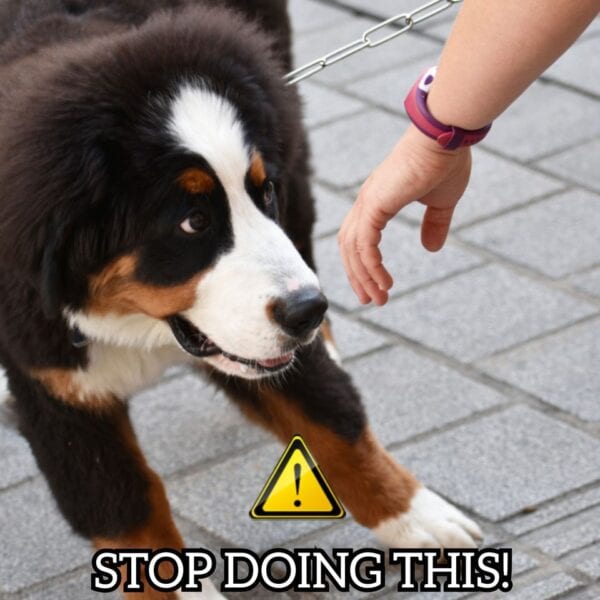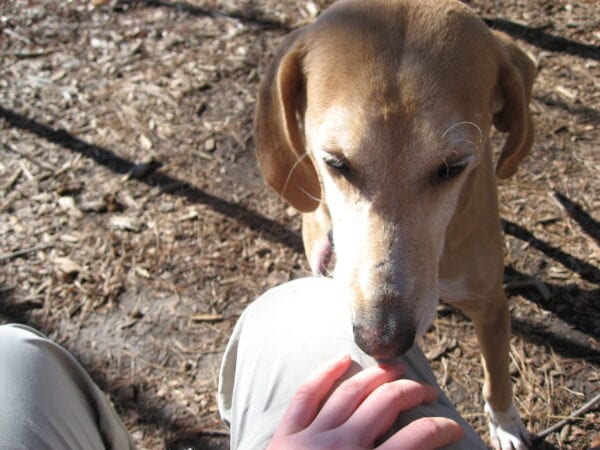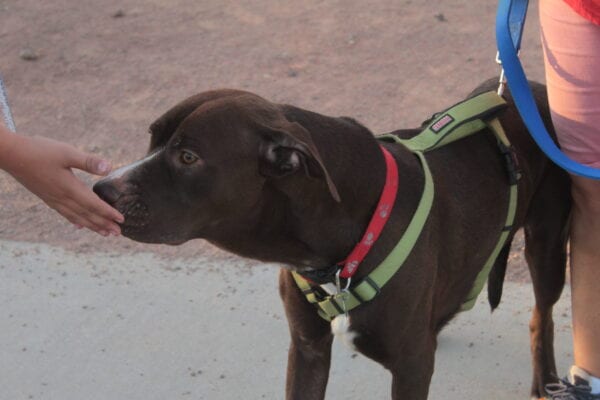Whenever we see a dog, we want to meet them. It’s impossible not to fall in love with a dog at first sight. So, many humans have become accustomed to introducing themselves to new pups. This usually involves extending your hand to the dog and allowing them to sniff you first. It’s the universal sign that a dog approves of you. Or, so we thought.
As it turns out, the “sniff test” is anything but relaxing for a dog. In fact, dog trainers are now urging humans to stop these unwanted interactions.

Why is the “Sniff Test” a Problem?
For years, people have been reminded to let a dog sniff you before petting them. It’s assumed that one little sniff will automatically make a dog feel comfortable. Unfortunately, that isn’t the case. For humans, it might be friendly to extend a hand to one another, but dogs don’t feel the same way.
A post from Eureka Dog Services and the advice from celebrity dog trainer Tamar Geller have helped open people’s eyes to the truth. They both agree that the “sniff test” is a bad habit that many humans have been taught without even knowing why. In many cases, this hand gesture is intimidating to dogs, which could cause them to cower or lash out.
“When you reach out towards a dog, you are using body pressure at them, giving them no time to assess whether you are safe and whether they require further investigation to pick up your information,” Eureka Dog Services wrote. “You are forcing an interaction of a relationship that hasn’t had time to develop. To some dogs, this is quit rude and the reason a lot of dogs snap at or bite people.”
Most dogs will freeze, run away, or nip in this situation. All three behaviors are signs that a dog is nervous, and extending your hand to them will only make it worse.

What Should We Do Instead?
The first step is to ask the family’s permission before approaching a dog. Many people just come up to the dog and extend their hand without the human’s approval. This makes the situation even more uncomfortable for the dog. Even if all dogs seem to love you, there’s a chance that the dog could be scared of humans or working on training, so you should talk to their family first.
Even with the family’s approval, you still need to be careful. Moving directly at a dog might scare them, so you need to be more passive. Let the dog come to you. If they genuinely want to meet you, they will come up and sniff you on their own terms.
“It’s so much easier to communicate when you know the other’s language, and in this case, the doggie’s language is based on body posture and facial expressions. The right thing to do is turn your body and your face away at a 45-degree angle and smile,” said Gellar.

RELATED: Look For These “Calming Signals” When Your Dog Is Meeting New Friends
Many dogs will also feel safer around you if you have a yummy treat to offer. This, of course, should also be done only with the family’s permission. Additionally, when you first touch a dog, it’s important to keep your hands away from their head.
As for dog parents, they should take control of their dog whenever unfamiliar people are around. If you know your dog won’t be comfortable being touched, then don’t allow it. If you want to help your dog get used to more people, reward them when they meet new people and say things like “friend” in a comforting voice.
Communicating with dogs can be tricky, but as long as we’re cautious, we can keep everyone safe and content.
H/T: people.com
Featured Image: @eurekadogservices/Facebook
 Toledo, United States.
Toledo, United States.